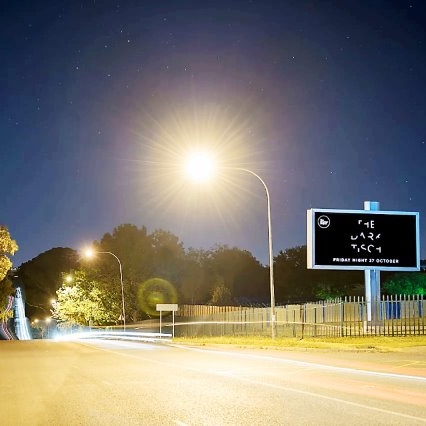News
Demystifying the Dark Tisch
It’s 23:00 on a balmy Friday night in Jerusalem, as you join a crowd shuffling into a small cafeteria in Mea Shearim. Inside, as you take your seat at a row of tables, it’s dark. Not hazardously dark – you aren’t feeling your way forward or tripping over one other – but all you can really make out are shadows and silhouettes.

SIMON APFEL
The room, now filled with around 200 people, remains largely silent. Where words are being uttered, it’s in a hushed whisper, perhaps in awe of the darkness. Then the singing starts.
You don’t need to know any words. There are no words. You don’t even need to know the melodies. For as you sway to their rhythm, the ancient niggunim sweeping you along, you realise you know them. You’ve always have.
You’re becoming weightless. You’re transported, carried aloft on a wave of song. You’re feeling things you’ve never felt, expressing things you’ve never expressed. Cogs start to shift, not in your mind, but in a deeper ineffable part of your being. It’s kind of eerie. And it’s kind of unforgettable. The darkness, you realise, can be dazzling.
It’s called the “Dark Tisch”. And on October 27 – the Friday night of the Shabbat Project – it’s coming to South Africa.
For Batya Smadja, a Johannesburg-based strategist who has been instrumental in bringing the Dark Tisch to life, it’s an opportunity to bring people together in a unique way, and in doing so, help actualise one of the main tenets of the Shabbat Project.
“The Shabbat Project is about uniting our community – bringing together Jews of all backgrounds,” she explains. “The darkness can be a great equaliser. The wonderful thing is that it removes all barriers. You can’t properly see who is sitting next to you.”
She also makes the point that people feel less inhibited in the dark.
“No one needs to be embarrassed to sing. Someone who wouldn’t normally get up in front of a crowd, might feel more inclined to give over a nice idea or tell a personal story. People share more – and more personally – in this setting.”
In recent months, with the SA Jewish community rocked by some tragedies, it has taken on an added significance.
“We’ve experienced a lot of darkness in the community over the past year. There’s no answer, no explanation, but sometimes there can be a response. And the Dark Tisch is a potent symbol of what that response might be.
“On a metaphoric level, the Dark Tisch is about bringing light into the darkness, lighting up a dark space. It’s about coming together and spreading the light.”
And people are responding to the call. Youth movements are getting involved, SRC leaders are rallying school kids to show up in their numbers, and the Shabbat Project office is inundated with calls from a broad spectrum of community members.
“There’s something deeply spiritual and quietly inspiring about the Dark Tisch,” says Smadja, “something so self-centring about being in the dark. There’s a mystery and intrigue here. I believe this can uplift a Shabbos like it’s never been before.”
Uplifting indeed. One Capetonian who attended the tisch in Israel, reported seeing “fiery Hebrew letters”. But whether your experience is mystical or slightly more grounded, one thing is certain – it’s going to be an experience.
* Catch the Dark Tisch at Sandton Shul, Sunny Road Shul and Ohr Somayach Savoy in Johannesburg, and at Marais Road in Cape Town, from 21:30 on Friday October 27. Entrance is free.
Dave Sieff
October 25, 2017 at 10:34 am
‘Awesome ! Kol Hakavod !
I would have loved to share this meaningful event,but the sites are too far for me to reach.
‘